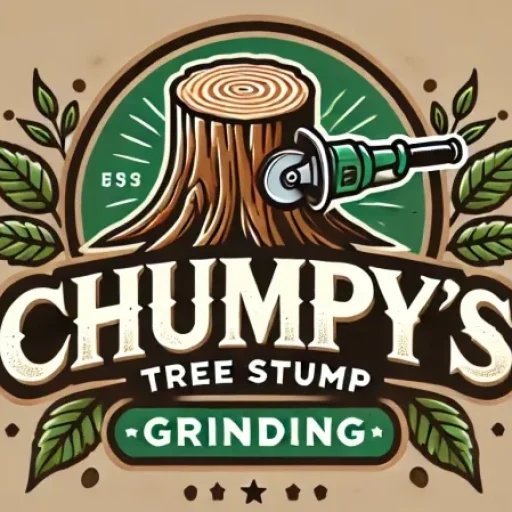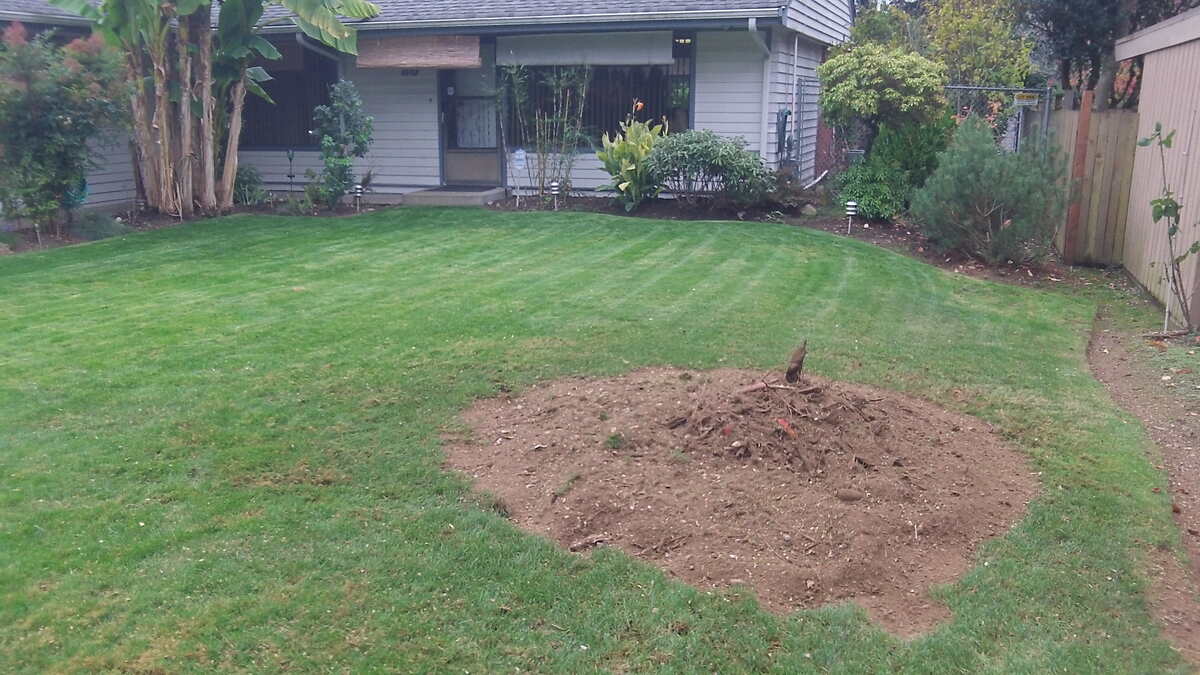Stump grinding is generally safe for residential lawns—when performed by a qualified professional. However, poor weather, heavy equipment, or inexperienced operators can lead to ruts, grass loss, or irrigation damage. Understanding what causes lawn damage and how to prevent it protects both your yard and your investment.
According to a 2024 local survey by Central Texas Tree Care, 13% of stump removal jobs resulted in some form of minor turf damage, mostly caused by wet conditions or unmarked irrigation systems. But with the right contractor and conditions, you can avoid most issues entirely.
“The most common mistake we see is clients scheduling grinding right after heavy rain. That’s when lawns are most vulnerable,” says Rob McAdams, owner of McAdams Tree Experts, an ISA-certified arborist with 20+ years in Austin.
Can stump grinding damage your lawn?
Yes, stump grinding can cause temporary damage to grass and topsoil under certain conditions:
- Heavy or tracked machines may compress soft soil
- Improper turning or reversing tears sod, especially in thin turf
- Unshielded grinding debris can bury or shred nearby plants
- Unmarked sprinkler heads may get crushed under tires
Example: A client in Pflugerville hired a budget grinder without a site inspection. After a rainy week, their entire side yard had to be re-sodded due to deep rutting. The fix cost $950, far more than the stump removal.
What parts of the yard are most at risk?
Certain areas are more vulnerable during grinding, especially in Central Texas homes:
- Side gates and access paths – Often too narrow or soft for large wheeled equipment
- Underground irrigation systems – High risk if not marked; repairs range from $150–$500
- Flower beds near stumps – Mulch or decorative borders may get scattered
- Freshly laid sod – Easier to damage than mature, rooted turf
Tip: Before grinding, flag or map out your sprinkler lines and ask your contractor to avoid high-risk zones.
Does stump grinding kill nearby grass or plants?
Stump grinding doesn’t kill grass directly, but grindings and debris can smother turf. The real concern is nitrogen lockout caused by decomposing wood.
- Grass under wood chips may yellow or die within 5–7 days
- Plants buried by chips can suffer root rot, especially in shaded beds
- Grindings pull nitrogen from soil, slowing regrowth
Use a rake or leaf blower to spread chips thinly. If replanting soon, remove grindings and mix in compost to restore nitrogen levels.
“A half-inch of wood chips is okay for mulch, but anything thicker suffocates turf,” says Dr. Amanda Treviño, soil ecologist at Texas A&M AgriLife Extension.
How do professionals protect your lawn during stump grinding?
Reputable stump grinders in Austin take multiple steps to protect your lawn:
- Use compact, tracked grinders that reduce pressure on turf
- Deploy chip guards to prevent wood spray
- Add plywood paths or ground mats over vulnerable areas
- Rake and clean the turf before finishing
- Flag nearby hazards like water meters, garden beds, and sprinklers
Professionals often ask for photos of your yard or conduct in-person visits to assess access points. This step is crucial for older Austin neighborhoods with narrow driveways or elevated yards.
What if it rains before or after stump grinding?
In Travis County, spring and fall rains can saturate topsoil for 24–72 hours. Grinding immediately after rain creates:
- Soggy turf that sinks under equipment
- Risk of 3–6 inch tire ruts
- Delays in clean-up due to slippery ground
Many stump grinding companies now use soil probes or moisture meters before starting work.
“If your boots leave an imprint, it’s too wet to grind,” says Luis Delgado, foreman at Tree Top Pros, an Austin-based tree removal firm. “We’d rather reschedule than ruin your Bermuda lawn.”
If rain is forecasted, ask your contractor about their wet-ground policy.
Can stump grinding damage tree roots of nearby trees?
Yes, especially if:
- A second tree is within 6–10 feet of the stump
- Surface roots were shared or interlocked
- The grinder cuts wider than necessary to remove all root flares
Root stress can cause leaf drop, dieback, or slower growth in adjacent trees. Consider hand-digging near live root zones or limiting the depth to avoid impact.
Live oak and cedar elm are especially vulnerable, common in Central Texas yards.
“Cutting feeder roots of nearby trees can shock them, even if they’re healthy,” says Dr. Wayne Polk, arboriculture professor at UT Austin’s School of Environmental Design.
How to repair lawn damage after stump grinding
If lawn damage occurs, restore it quickly using these steps:
- Rake out grindings — Avoid letting wood chips rot in place
- Topdress with compost-rich soil — Mix to level low areas
- Add Bermuda or Zoysia seed or sod — Match your existing lawn type
- Water consistently for 10–14 days — Maintain even moisture
- Fertilize with nitrogen-based mix — Rebuild soil health
Austin’s clay soil benefits from compost + sand blends (often sold locally as “lawn mix”). Apply in a 1-inch layer and water lightly to settle.
Will a professional grinder leave my lawn clean?
Top-rated stump grinding companies in Austin usually charge a cleanup fee to remove all debris. This often includes:
- Full chip removal or redistribution
- Turf raking and soil levelling
- Power blowing of driveways, patios, and beds
- Final walk-through with the homeowner
Most companies charge 50-100% of grind fees for haul-off.
Final Tip: Ask About Lawn-Safe Equipment
Protecting your lawn starts with choosing the right contractor and equipment. Ask:
- Do you use compact or turf-safe machines?
- Will you lay boards or mats on the lawn?
- Is clean-up included in the base price?
- How do you handle rain delays or soggy access?
“The best time to protect your yard is before the grinder ever touches it,” says Kaitlin Reyes, customer service lead at Eco Tree Services in Austin.

